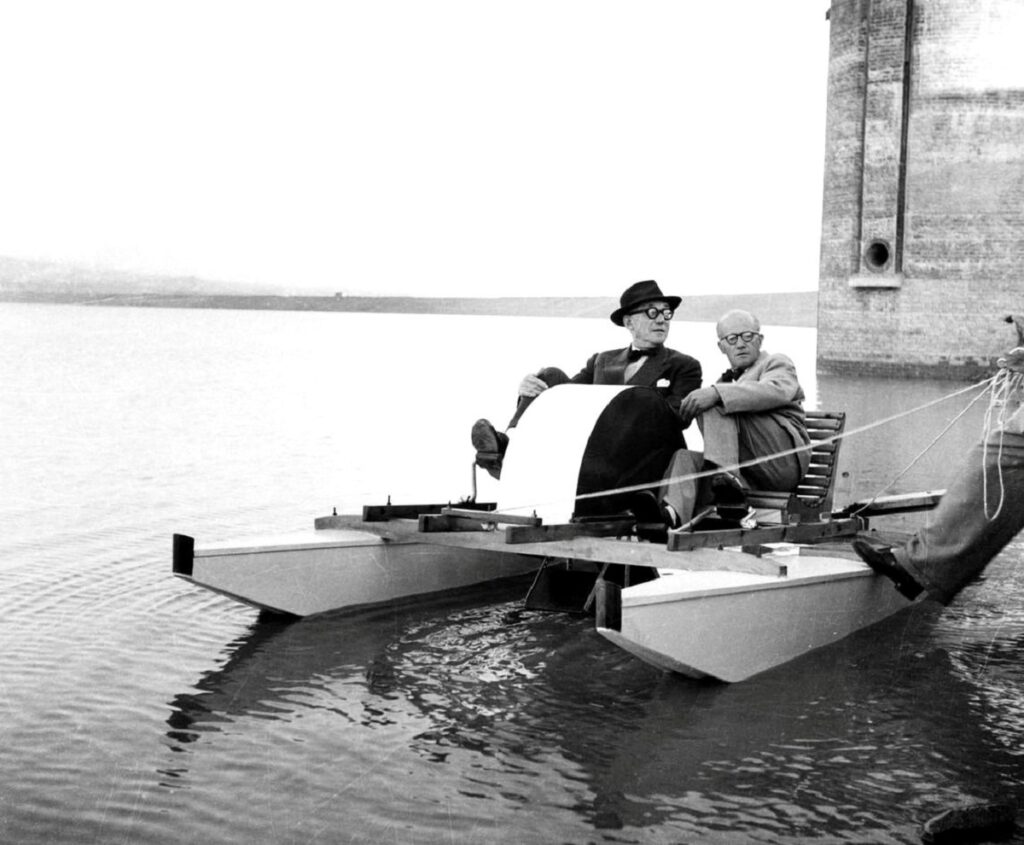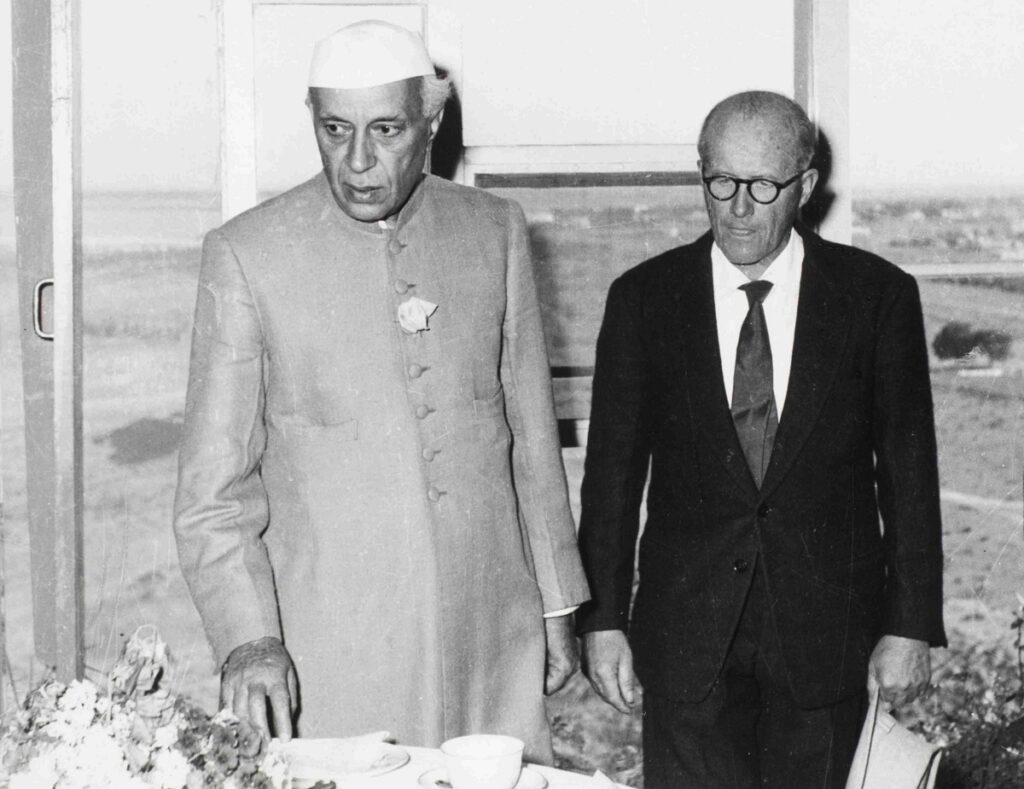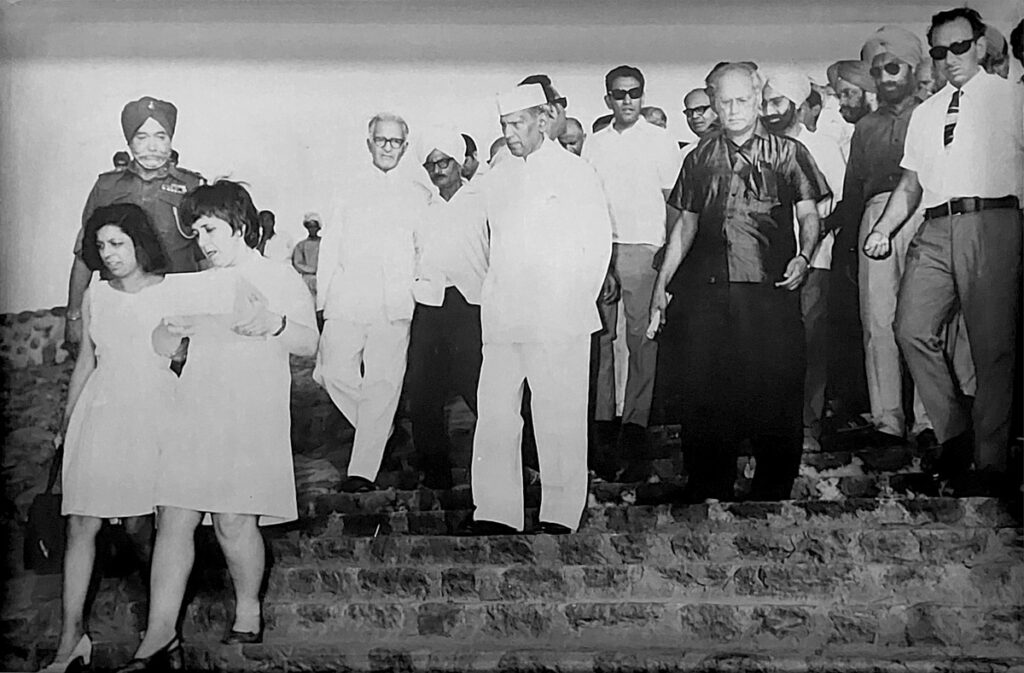
A Nepal-born American architect asked me to pen some untold anecdotes and stories of Pierre Jeanneret. He intended to know something more and different about Pierre Jeanneret, his personality and relationship with his staff and his ways of tackling senior functionaries of the government. I found the suggested topic very interesting but doubted whether I could do justice to it. The reason was an age difference, as I was only ten years old when Pierre Jeanneret left this world in 1967. I never met Pierre Jeanneret, but I have long been associated with many of his Indian colleagues who have worked directly with him.
I joined the Department of Architecture, Punjab (once headed by Pierre Jeanneret) in 1980 and served there for more than three decades. Luckily, I worked with many of the associates of Pierre Jeanneret, like UE Chowdhury, Jeet Malhotra, HS Chopra, and others.
Since the beginning of my professional career, I have listened to numerous tales about Pierre Jeanneret, who remained the Chief Architect of the Department of Architecture from 1952 to 1965. I started recollecting and writing some anecdotes to complete the new assignment, my younger friend gave me.
I have learnt about Pierre Jeanneret from my senior colleagues that he was straightforward, humble, polite, down-to-earth, amicable, and caring. Apart from this, he was an outstanding architect with exceptional qualities like creativity, inquisitiveness, adaptability to new environments, skills to handle different building materials and understanding of the users’ requirements.
During his one-and-a-half decade-old stint as head of the Department of Architecture, Pierre Jeanneret was loved and respected by his junior colleagues for his affectionate and caring attitude. There is an exciting yet touching anecdote. There came a time when the disbursements of salaries of the staff were stopped for one or two months. The reason was the delay in passing the annual budget by the state government and some other procedural delays. Resultantly, the entire staff faced tough times meeting their ends.
Due to this challenging situation, there was lots of whispering amongst the staff under tremendous financial pressure. Nobody told Pierre Jeanneret directly, mainly due to the language barrier as he was a French-speaking person and not quite fluent in English, what to talk of other local languages like Hindi and Punjabi. The staff was only Punjabi or Hindi-speaking, and most were not fluent in English.
After a few days, Pierre Jeanneret smelt the rat and felt everything was not going smoothly in the office. He called UE Chowdhury – the only lady architect in the department who could understand and speak French, English, Hindi, and many other languages. Jeanneret asked her if there was any resentment in the staff. UE Chowdhury explained that due to the non-disbursal of salaries, the staff members are tense and cannot concentrate on their work properly.

After knowing the whole story, Pierre Jeanneret asked UE Chowdhury to talk to staff members and prepare a list of essential and bare minimum money requirements. Having done that, Pierre Jeanneret paid the needy from his bank account. Such a generous person he was!
Despite his politeness and humbleness, Pierre Jeanneret was a steadfast person in matters related to planning and architecture. He has nourished the development of the Capital City of Chandigarh with utter sincerity, dedication, and selflessness. When he saw any violations or deviations from the core concepts of the city’s planning, he handled it with a firm hand. There is an interesting anecdote.



As per the pre-decided edict, Chandigarh shall be kept a cattle-free city. Thus, residents were not allowed to keep cattle on their premises. Contrary to this edict, Sardar Partap Singh Kairon, the then Chief Minister of Punjab, kept a cow in his residence to meet his family’s daily requirement of milk. Also, he has constructed a bare minimum infrastructure for the cow, like a manger (khurli). When Pierre Jeanneret learned about this development, he met the Chief Minister at his residence. Jeanneret asked the CM to demolish the manger and remove the cow immediately.
The Chief Minister, Partap Singh Kairon – a highly educated and towering politician then- tried to convince Jeanneret that he should have this privilege as a Head of the State. But Jeanneret politely and firmly declined his desire and insisted upon removing the violations. Kairon again tried to impress upon him authoritatively and asked for exemptions. When Pierre Peanneret judged that the CM was not relenting, he took out a folded piece of paper from his pocket and, while handing it over to the CM, said, “Then here is my resignation.”
On seeing this humble man’s firm action, Kairon instructed his staff, “Boys, demolish the manger and remove the cow immediately; otherwise, he will tell Jawaharlal Nehru. (Kaka, khurli jaldi dhah deo, te gaan hata deo nahi tan isne Jawaharlal nu das dena hai). Such was a conviction of this humble and polite man!
Pierre Jeanneret nourished the development of Chandigarh with unparalleled love and dedication. Despite being the Chief Architect with all the facilities like an official car, he used to move around the city on his bicycle in the evenings and watch the progress of buildings under construction. In this way, he could meet many people and see any discrepancies rectified immediately according to his orders. The beautiful city has acquired its status due to the selfless services of people like Pierre Jeanneret.
As Head of the Department of Architecture, Pierre Jeanneret always groomed and encouraged his young Indian colleagues to think afresh and evolve innovative ideas in consonance with the spirit of Chandigarh’s architecture. Resultantly, many youngsters could put their signatures on many outstanding buildings in Chandigarh. For instance, when Jeet Malhotra was asked to design some schools, he evolved a system of triangular corbelled arches in brick. When Jeet Malhotra showed this design to Pierre Jeanneret, he said that it looked too decorative and may not go with the architecture of Chandigarh. So, Pierre Jeanneret asked Malhotra to keep it pending till the visit of Le Corbusier. When Le Corbusier visited Chandigarh, they showed him this design, and he readily agreed, saying that it is in the true spirit of the material, i.e., brick. Finally, based on this design, many schools were constructed. After more than six decades, these buildings still look as fresh as ever. Likewise, Pierre Jeanneret encouraged architect HS Chopra to design Nehru Hospital on the PGI campus. There are, of course, numerous other examples which show the mentorship qualities of Pierre Jeanneret.
Pierre Jeanneret was a very creative and hardworking person who never liked to sit idly. Whenever he found time from his professional commitments, he loved to craft wooden furniture out of cut pieces of logs, wooden slices from old tree trunks, bamboo, niwar, munjh, and steel bars. This furniture includes chairs, stools, centre tables, side tables, lamp shades, etc., and was primarily meant for his personal use. Later, when he left Chandigarh in 1965, he gifted these precious pieces of furniture to the Chandigarh Museum. Apart from this, Jeanneret was very fond of making sailboats for Sukhna Lake. He used to spend his weekends with his colleagues while making paddleboats and then enjoy boating at Sukhna Lake. At other times, Jeanneret would draw on the carpet with his attendant Bansi, and together they produced carpet (duree) designs. By doing so, he had taught us that we should not only be drawing-board architects but also should work with our hands to give shape to our creations.

Pierre Jeanneret was a great teacher who had a poetic way of teaching. He always taught through exemplary creative expression rather than lessons and sermons. He used to convey a lot through his conduct. Architect Jeet Malhotra once shared that Jeanneret felt cold much more than others. He would always have two heaters in his room, on either side of his chair. One freezing evening, Malhotra walked into his room to discuss some drawings, leaving the door open. There was a severe draught. Without saying anything, Jeanneret walked up to the door, lit a cigarette, and gently closed the shutter. He came to his chair to look at the drawings that Malhotra had brought, still composed and quiet. Malhotra says that this incident taught him a lesson, and he never left a door open behind him.
Recollecting another incident, Jeet Malhotra shared that he left some work half-finished to go to a movie on Sunday evening. The following morning, anticipating a severe rebuke, he walked apprehensively into the office and discovered that the strange man had completed the remaining work himself.


When Pierre Jeanneret left India, he gifted all his household belongings to his needy colleagues. Of these, Bansi, his peon and later attendant was the most beneficiary. Jeanneret built a house for him, gifted him a car, and made provision for his children’s education when they grew up. Jeanneret was a man who had inspired many with his charismatic personality. He had an immaculate simplicity and loved India more intensely than most Indians. He bade farewell in these immortal words, “I now leave my home and go to a foreign country.” Jeanneret left for Geneva on August 31, 1965. Back home, he fell ill and suffered severely till his last day. Jeanneret passed away on December 4, 1967. He wished his ashes to be immersed in the Sukhna Lake of Chandigarh so that he would become a part of his creation.
In April 1970, Pierre Jeanneret’s niece, Jacqueline paid a special visit to Chandigarh to perform the immersion ceremony. Long live the memories of Pierre Jeanneret – the Saint Architect.
All images are contributed by the author.








3 Responses
Very interesting and inspiring
Very valuable information for the Posterity. Nicely conveyed in simple and straight forward manner
Wonderful.
Very interesting and informative article.